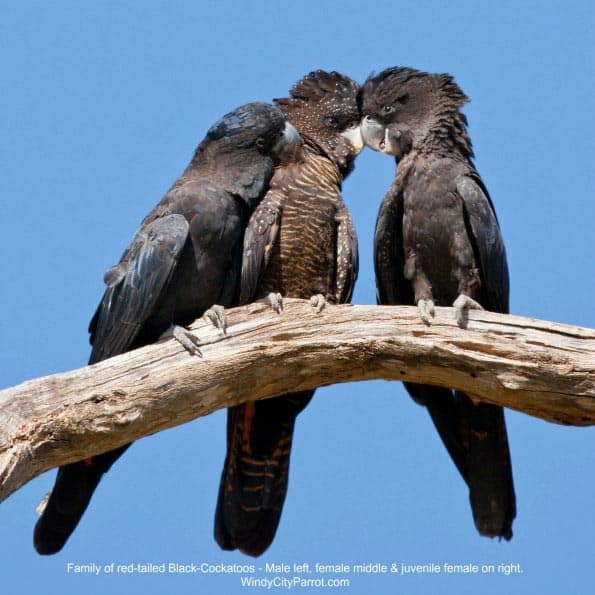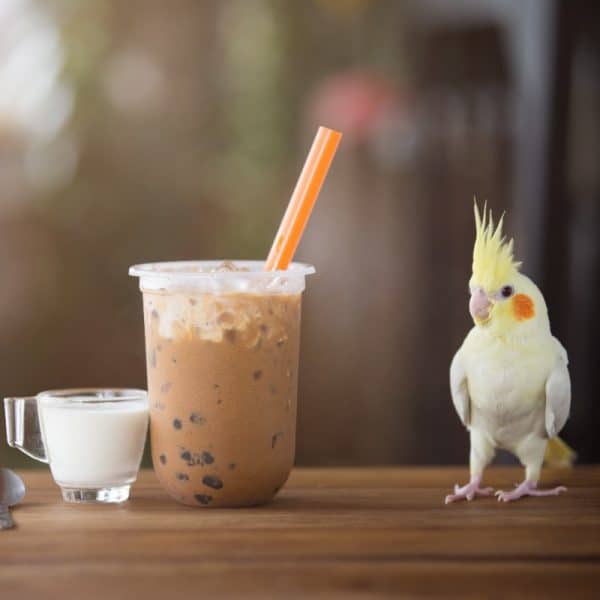Last Updated on by Mitch Rezman
i have some drift wood that my grandkids collected from a creek way out in country wanting make bird perches to put in bird cages. what do i have to do to wood or is this safe.
i soaked in tub for 2 days putting new water on 2-3 times a day. can i use or should i throw away do not know what kind of wood
Catherine says:
Driftwood is not recommended for bird cage perches as it may contain toxins, insects, plus you cannot identify the original wood.
Some are toxic to birds.
It would be better used for reptiles who would not consume it.
mitchr says:
we are not big fans of using random pieces of outdoor wood for bird perches even if it “safe wood”.
As well as the issues Catherine stated we can add biohazard, from migratory birds, undetectable molds, parasites and danger you shouldn’t chance on passing to your bird
(Allegedly) Safe Wood for Perches
| Acacia Almond Apple Arbutus Ash Aspen Bambo Beech Birch Citrus Cork Oak Cottonwood Crab apple Dogwood Elm Fig Fir Fruitless Mulberry Ginkgo Grape Vines Grape Palm Guava Hackberry Hazelnut Hibiscus Hickory Ironwood Larch Lilac |
Liquidamber Madrona Magnolia Manzanita Maple Mediterranean Laurel Mesquite Mimosa Mulberry Norfolk Island Pine Oak Palm Papaya Pear Pecan Pine Poplar Ribbonwood Rose Sassafras Spruce Sweet Gum Sycamore Thurlow Tree Fern Umbrella Tree Vine Maple Walnut Willow |
Allegedly toxic: Apricot Bis d’arc Cherry Eucalyptus Horse Apple Nectarine Peach Plum Prune Sequoia Sitka cedar Yellow cedar Unequivocally toxic: Box Elder Crepe Myrtle Chinese Popcorn Chinese snake tree Chinese Tallow Hemlock Holly Laurel Pitch pine Redwood Sumac (Rhus/Toxicodendron) Yew |
While the wood from these trees may be considered to be chemically non-toxic, spines, wood fibres and splinters may pose a physical problem.
Bamboo (which is actually a grass, not a tree) can have very sharp edges.
Branches gathered from the countryside may carry fungi or parasites in bird droppings and need to be washed.
We advise using a nail brush with antibacterial washing up liquid and/or avian disinfectant.
Personally I’d cut fresh tree branches rather than use windfalls: hopefully this reduces the probability of mycotoxins.
Do not to use wood from Prunus spp. trees because it contains cyanogenic glycosides.
Such trees include: apricot, cherry, nectarine, peach, prune and plum but the Birdsafe site reports no confirmed bird deaths.
Oak is reputedly dangerous because of tanin content but confoundingly, tanin levels are much higher in other foods eaten by birds such as some nuts.
Toxicity is not a simple matter of what but also involves how much and how often: you can kill yourself (and your parrot) with organic carrots if you really want to.
A good choice of wood: Apple and beech, occasionally spruce or ash. Always check before you buy new wood.
| Acokanthera – Acokanthera spp. (all parts toxic, except ripe fruit) Amaryllis – Amaryllis spp. Angel’s Trumpet – Datura spp., (leaves, seeds, flowers) Apricot – Prunus armeniaca (pits, leave and bark) Apple – Malus spp., (seeds, leaves, bark) Avocado – Persea Americana (pit, leaves, unripe fruit, stems) Azalea – Rhododendron canadenis Balsam Pear, Bitter Melon – Momordica charantia Baneberry – Actaea rubra, A. pachypoda Belladonna – Atropa belladonna Bird of Paradise – Poinciana and related spp. (seed pods and flowers) Bittersweet – Celastrus spp. Black Locust – Robinia pseudoacacia Boxwood – Boxus spp. Braken Fern – Pteridium aquilinum Buckthorn – Karwinskia humboldtiana and related spp. Burdock – Arctium spp. Buttercup – Ranunculus spp. Caladium – Caladium spp. Calla Lily – Zantedeschia aethiopica Catclaw Acacia – Acacia greggii (twigs and leaves) Caster Bean – Ricinus communis Cherry – Prunus spp. (pits, leaves and bark) Chinaberry – Melia azadarach Clematis – Clematis montana and related spp. Coral Plant – Jatropha mutifida Crocus (autumn) – Cholochicum autumnale Cycad or Sago Cycas – Cycas revoluta Daffodil – Narcissus tazetta Daphne – Daphne mezerum Death Camas – Zigadenus venenosus and other related species Delphinium – Delphinium spp. Devil’s Ivy – Epipremnum aureum Dieffenbachia (dumb cane) – Dieffenbachia spp. Eggplant – Solonum melongena (unripe/ripe fruit, leaves) Elderberry – Sambucus mexicana (roots, leaves, stems, bark) Elephant’s Ears or Taro – Colocasia spp. Euonymus – Euonymus spp. (filit, bark, leaves) European Pennyroyal – Mentha pulegium Figs – Ficus spp. (sap) Four o’clock – Mirabilis jalapa Heliotrope – Heliotropium spp. (leaves) Henbane – Hyoscyamus niger Holly – Ilex aquifolium and related spp. (leaves, berries) Horse Chestnut – Aesculus hippocastanum and related spp. Horse Nettle – Solanum carolinense Hyacinth – Hyacinthus orientalis Hydrangea – Hydrangea spp. Iris – Iris spp. Ivy (Boston, English and some others) – Hedera spp. Jack-in-the-Pulpit – Arisaema spp. Jerusalem Cherry – Solanum pseudocapsicum and related spp. (leaves, seeds and flowers) Jonquil – Narcissus jonquilla Juniper – Juniperus spp. Lantana – Lantana camara Larkspur – Delphinium spp. |
Laurel – Kalmia spp. Lily-of-the-Valley – Convalleria majalis Lobelia – Lobelia spp. Locoweed – Astragalus spp. and Oxytopis spp. Lupine – Lupinus spp. Marijuana – Cannabis sativa Milkweed – Asclepias spp. Mistletoe – Phoradendron villosum Mock Orange – Philadelphus spp. Moonseed – Menispermum canadense Monkshood – Aconitum spp. Morning Glory – Ipomoea violacea (seeds) Mushrooms – Amanita spp. And many others Narcissus – Narcissus spp. Oak – Quercus spp. Oleander – Nerium oleander Peach – Prunus persica (leaves, pit, bark) Pear – Pyrus spp. (leaves, seeds, bark) Peony – Paeonia officinalis Periwinkle – Vinca minor, Vinca rosea Peyote – Lophophora williamsii Philodendron – Philodendron spp. and Monstera spp. Plum – Prunus spp. (leaves, pit, bark) Poison Hemlock – Conium maculatum Poison Ivy – Toxicodendron radicans, includes T. rydbergii Poison Oak – Toxicodendron querciflium and T. diversilobum Poison Sumac – Rhux vernix Poinsettia – Euphorbia pulcherrima Poppy – Papaver somniferum and related spp. Pokeweed – Phytolacca Americana Potato – Solanum tuberosum (sprouts, leaves, berries, green tubers) Pothos – Eprimemnum aureum Primrose – Prmula spp. Privet – Ligustrum vulgare Ragwort – Senecio jacobea and related spp. Red Maple – Acer rubrum Rhododendron – Rhododendron spp. Rhubarb – Rheum rhabarbarum (leaves) Rosary Pea – Abrus precatorius Sage – Salvia officinalis Shamrock Plant – Medicago lupulina, Trifolium repens, Oxalis acetosella Skunk Cabbage – Symplocarpus foetidus Snowdrop – Galanthus nivalis Sorrel – Rumex spp., Oxalis spp. Spurges – Euphorbia spp. Star of Bethlehem – Ornithogalum umbellatum Sweet Pea – Lathyrus odoratus Tobacco – Nicotiania spp. Tomato – Lycopersicon esculentum (stems and leaves) Tulip – Tulipa spp. Virginia Creeper – Panthenocissus quinquefolia Vetches – Vicia spp. Water Hemlock – Cicuta spp. Waxberry – Symphoricarpos albus Wisteria – Wisteria spp. Yew – Taxus spp. |
| Acacia |
| Aloe |
| African violet |
| Baby’s tears |
| Bamboo |
| Begonia |
| Boston fern |
| Bougainvillea |
| Chickweed |
| Christmas cactus |
| Cissus Vine |
| Coleus |
| Corn plant |
| Crabapple |
| Dandelion |
| Dogwood |
| Donkey tail |
| Dracaena varieties |
| Ferns |
| Figs: (creeping, |
| Fiddle leaf |
| Gardenia |
| Grape ivy |
| Hen and chickens |
| Impatiens |
| Jade plant |
| Kalanchoe |
| Magnolia |
| Marigolds |
| Monkey plant |
| Mother-in-law |
| Nasturtium |
| Natal plum |
| Norfolk island pine |
| Orchids |
| Palms |
| Phownix) |
| Pepperomia |
| Petunia |
| Pittosporum |
| Prayer plant |
| Purple passion |
| Rose |
| Rubber plant |
| Sensitive plant |
| Snake plant |
| Spider plant |
| Swedish ivy |
| Thistle |
| Velvet nettle |
| Wandering jew |
| Wax plant |
| White clover |
| Yucca |
| Zebra plant |
| Zinnia |
|
Alcoholic drinks
|
| Ammonia |
| Antifreeze |
|
Ant syrup or paste
|
| Arsenic |
| Asbestos |
| Auto products |
|
Bathroom cleaners
|
| Bleach |
| Boric acid |
|
Camphophenique
|
|
Carbon monoxide
|
|
Carpet cleaners
|
|
Carpet fresheners
|
| Charcoal fluids |
| Chlordane |
| Chlorine |
|
Cigarette smoke
|
| Clinitest tablets |
|
Copper/brass cleaner
|
|
Corn & wart remover
|
| Deodorants |
| Detergents |
| Diazinon |
| Disinfectants |
| Drain cleaners |
| Epoxy glue |
|
Felt tip markers
|
| Flea products |
| Floor polish |
| Formaldehyde |
|
Furniture polish
|
| Garden sprays |
| Gasoline |
| Gun cleaners |
|
Hair dyes & sprays
|
| Herbicides |
| Insecticides |
| Iodine |
| Kerosene |
| Lighter fluid |
| Lye |
| Matches |
| Melaleuca oil |
| Model cement |
| Mothballs |
| Muriatic acid |
| Mushrooms |
|
Nailpolish/remover
|
|
Nitrogen dioxide
|
| Oven cleaner |
|
Overheated non-stick
|
| Cookware |
| Paint & thinner |
| Perfume |
|
Permanents(hair)
|
| Pesticides |
| Photo solutions |
| Pine oil |
| Rx drugs |
| Rodenticides |
|
Rubbing alcohol
|
|
Scented candles
|
| Shaving lotion |
| Shellac |
| Shoe polish |
| Snail bait |
| Spot removers |
| Spray starch |
| Strychnine |
| Sulfuric acid |
| Super glue |
|
Suntan lotions/oils
|
|
Surgical acrylics
|
| Tea tree oil |
| Turpentine |
| Wax |
| Weed killers |
|
Window cleaners
|
|
Wood preservatives
|
Author Profile
Latest entries
 The Traveling BirdJune 26, 2025Can You Name 5 Parrot Species That Are Living Wild in the USA?
The Traveling BirdJune 26, 2025Can You Name 5 Parrot Species That Are Living Wild in the USA? Bird BehaviorJune 26, 2025How is it Parrots Are Problem Solvers Social Animals and Even Use Tools?
Bird BehaviorJune 26, 2025How is it Parrots Are Problem Solvers Social Animals and Even Use Tools? Bird & Parrot AnatomyJune 25, 2025How a Tiny Chemical Modification Makes Parrots Nature’s Living Paintings
Bird & Parrot AnatomyJune 25, 2025How a Tiny Chemical Modification Makes Parrots Nature’s Living Paintings PigeonsJune 20, 2025How Do Parrots Thrive in Cities Outside Their Native Habitats?
PigeonsJune 20, 2025How Do Parrots Thrive in Cities Outside Their Native Habitats?





